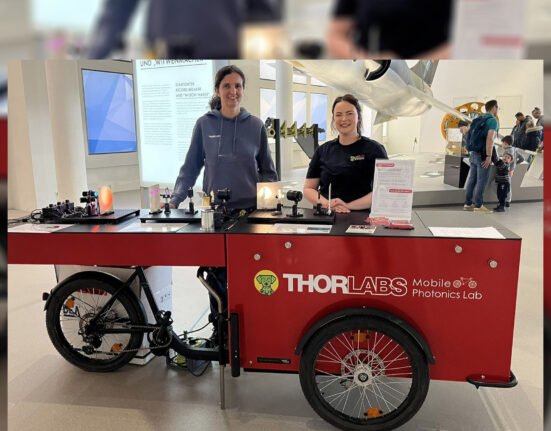Last November’s election ushered in a new administration, a new Congress, and a new political agenda. One of the Trump administration’s primary policy goals is to revitalize the U.S. economy while streamlining government to eliminate unnecessary impediments to innovation and growth. Under Republican leadership, the 119th Congress is pivoting toward an agenda that aligns with these ambitions. While trade, taxes, and industrial policy dominate the discussion, less familiar policies also warrant consideration. Patent reform, for example, can have significant implications for economic growth. Patents were initially introduced to encourage inventors and increase productivity, but the modern patent system increasingly fortifies monopolies at the expense of innovation.
Misaligned patent policies threaten real innovation and create a challenging environment for new innovators. Over-patenting makes it difficult to enter markets, as companies fear infringing on existing patents. The U.S. Patent and Trademark Office (USPTO) grants a substantial number of patents annually (327,405 in 2024), yet there has been no corresponding increase in productivity or economic growth. Moreover, most new patents are granted to foreign entities. In 2020, 53 percent of all U.S. patents were granted to foreign owners, with China as the second-largest foreign recipient of American patents.
Patents have proved particularly problematic in key economic sectors. In the technology sector, which generated 8.9 percent of U.S. gross domestic product in 2023, patent litigation stifles innovation. Apple, for example, faced three years of litigation due to the threat of an import ban on the popular Apple Watch despite the USPTO—and more recently, the U.S. Court of Appeals for the Federal Circuit—finding the patents in question invalid. In the pharmaceutical industry, patents make it difficult for generic firms to compete with brand manufacturers, contributing to drug prices that are 2.78 times higher in the United States than in other countries. The new Congress offers a unique opportunity to reevaluate the current system and address rent-seeking and anticompetitive behaviors embedded within it.
The Role of the Patent System
Using patents to incentivize invention in the United States dates to the nation’s founding. The Progress Clause of the U.S. Constitution authorized Congress to enact a statute granting inventors the exclusive right to their discoveries for a fixed period. Ideally, patents enhance innovation for the benefit of the overall economy. First, they provide inventors an opportunity to recoup their costs; second, they require inventions to be publicly disclosed so that they may be readily available once the exclusivity period concludes. Patents play a crucial role in many businesses, particularly those requiring substantial capital investments in research and development (R&D), such as the pharmaceutical industry. In 2021, R&D spending by U.S. pharmaceutical companies reached $152 billion, accounting for 55 percent of global R&D spending by drug companies.
While patents are now an integral component of business strategy, the economic debate over their value remains unresolved. Some argue there is no empirical evidence to support the claim that patents increase innovation and productivity. These economists note that significant innovation occurs outside the patent system, with robust competition, first-mover advantage, and trade secrets driving innovation. Patenting only increases as a product matures and the threat of competition begins to dissipate rents.
Other economists defend the patent system, highlighting the incentives and certainty patents provide for inventing and innovating in capital-intensive industries. Some believe patents establish the framework necessary to encourage the appropriate financing and investment decisions concerning innovation. Strong patents, they argue, underlie the process of bringing new products, processes, and technologies to market.
Still others argue that while patents may be a valuable tool to spur innovation, the current U.S. patent system is broken, and reforms are necessary to ensure they serve their intended purpose. Today, patents are often used in ways that harm consumers and hamper innovation for the benefit of actors who prioritize exploitation over true innovation. One economist noted, “[there are] several specific fact patterns under which the current U.S. patent system allows patent holders to capture private rewards that exceed their social contributions. Such excessive rewards to patentees are socially costly, as they raise the deadweight loss associated with the patent system and discourage innovation by others.”
Reformers contend that expansive definitions of patent eligibility and overly broad patents have led to the accumulation of poor-quality patents, which can impede inventors and innovators. In this respect, patents may be viewed as a “tragedy of the anticommons.” This economic concept, similar to the more traditional “tragedy of the commons” that leads to the overconsumption of resources, refers to a situation where competing ownership claims make it challenging to deploy resources to their most highly valued use. Overpatenting can similarly make it difficult to navigate the resulting legal landscape to bring new inventions to market.
Moreover, non-practicing entities (NPEs) exacerbate this problem by accumulating massive patent portfolios for strategic litigation. Often termed “patent trolls,” NPEs do not practice their patents but assert them against others, leading to excessive patent litigation that imposes real costs on true innovators and businesses. One report found that NPEs were responsible for almost 73 percent of annual patent litigation by the second quarter of 2022.
Reforms are imperative if patents are to promote invention. In a market economy, government policies should ideally aim to identify and eliminate anticompetitive behavior that hinders competition and reduces social welfare. This is particularly true in the case of patents because the government grants the monopoly in question.
Patent Problems Keep Drug Prices High
The pharmaceutical sector exemplifies how patent gamesmanship hinders innovation and drives up the cost of medicines. Brand-name manufacturers often extend their exclusive monopolies beyond the patent’s 20-year term by creating barriers that delay access to affordable generic drugs. Drug prices in other Organisation for Economic Co-operation and Development nations are roughly one-third of those in the United States.
Pharmaceutical companies justify high prices as necessary for R&D investments, with estimates ranging up to $4.5 billion to bring a drug to market. Yet a 2022 study found that levels of R&D investment did not explain variations in drug prices, raising concerns about whether R&D resources focus on genuinely innovative therapies or on opportunities to modify existing drugs to extend monopoly markets. Another study found that 78 percent of drugs associated with new patents were existing drugs rather than new market entries.
Companies employ several strategies to extend their monopoly power. Patent thickets—complex webs of patents filed on a single drug—make it difficult for generics to enter the market. Secondary patents can be filed on various characteristics of a drug, such as dosage, delivery mechanism, or manufacturing process, which are often less innovative than a drug’s primary patent. AbbVie’s Humira accumulated 165 patents, blocking competition for up to 39 years. Humira did not face biosimilar competition in the United States until 2023, five years after cheaper biosimilars were available in Europe. Research by I-MAK found that the top 10 branded drugs average 69.2 patents per drug, providing an average of 37.5 years without generic competition.
Evergreening and product hopping are additional strategies to maintain market dominance. Evergreening involves continually modifying aspects of a drug to extend protection beyond the initial patent’s expiration, often without enhancing its therapeutic value or efficacy. Product hopping involves introducing a modified version of an existing drug and actively switching patients to the new formulation. The original product may even be discontinued (termed a “hard switch”), making it difficult for generic manufacturers to gain market share.
Room for Reform
As stated in the U.S. Constitution, Congress has the authority to enact the statutes that underpin the patent system. The administration carries out these laws and oversees the patent system through the USPTO. Congress has intervened on several occasions to address issues regarding the patent system. The America Invents Act (AIA) passed in 2011 in response to widespread concerns over excessive patent litigation. The bill established the Patent Trial and Appeal Board (PTAB) within the USPTO that included an expedited inter partes review process for challenging the validity of questionable patents.
The Supreme Court also issued a series of decisions addressing rising patent litigation and overly broad patents. The Court has consistently ruled to balance competing interests amid growing concerns about the excessive power of patent holders as an interest group. In response, patent holders have aggressively pursued legislative policy changes to overturn these Supreme Court rulings and expand the scope and breadth of patents.
But rather than focusing exclusively on the interests of patent holders, reforms should examine the broader implications of patents on social welfare, balancing the benefits of invention incentives against the welfare costs of monopoly rent extraction. Key areas for reform include:
- Improving patent quality: Ensuring patents are only granted for genuinely novel and non-obvious inventions and strengthening the inter partes review process to invalidate low-quality patents that should not have been granted.
- Preventing abusive patent practices: Addressing tactics like evergreening, product hopping, patent thickets, and excessive patent litigation, often driven by NPEs.
- Promoting competition and follow-on innovation: Encouraging timely market entry of generics and biosimilars by addressing delay tactics that extend market exclusivity in the pharmaceutical sector and tackling excessive NPE litigation that impedes inventors and startups.
The 119th Congress and Patent Reform
Several patent reform bills have already been introduced in the new Congress. While some address anticompetitive practices and excessive litigation, others seek to strengthen patent owners’ power by expanding patent scope and making validity challenges more difficult. Key bills that may receive consideration in the 119th Congress include the following.
The Patent Eligibility and Restoration Act (PERA)
Sens. Thom Tillis (R-N.C.) and Christopher Coons (D-Del.) introduced PERA in the last Congress, and Sen. Tillis, the new Chair of the Senate Judiciary Intellectual Property Subcommittee, has said he plans to reintroduce the bill in the 119th Congress. PERA would overturn key Supreme Court decisions and significantly expand what can be patented. The Court has consistently held that “laws of nature, natural phenomena, and abstract ideas” cannot be patented; however, PERA would eliminate these judicial exceptions, allowing patents on previously ineligible subject matter in biotechnology, diagnostic testing, and artificial intelligence. This may hamper innovation in antibiotics, cancer treatments, diagnostic testing, and personalized medicine.
The Promoting and Respecting Economically Vital American Innovation Leadership (PREVAIL) Act
Introduced in the last Congress by Sens. Christopher Coons (D-Del.), Thom Tillis (R-N.C.), Dick Durbin (D-Ill.), and Mazie Hirono (D-Hawaii), the PREVAIL Act would make it more challenging to eliminate invalid patents by restricting the PTAB’s inter partes review process. The legislation would limit who can challenge patents, restrict the number of potential challenges, and increase the burden of proof required to demonstrate invalidity. While proponents view it as protecting small inventors, it may actually increase litigation by making it more difficult to challenge weak patents asserted by NPEs.
Realizing Engineering, Science, and Technology Opportunities by Restoring Exclusive (RESTORE) Patent Rights Act of 2025
Sens. Chris Coons (D-Del.) and Tom Cotton (R-Ark.) reintroduced the RESTORE Patent Rights Act (which has a House companion) to create a presumption that permanent injunctions should be granted in patent infringement cases. This directly attempts to reverse the Supreme Court’s 2006 eBay v. MercExchange decision, which addressed concerns that injunctive relief could threaten innovation by giving NPEs excessive leverage against companies. A presumption of injunctive relief can impose disproportionate penalties, such as banning an entire product for alleged infringement of a minor component. Research suggests that while eBay did not impede direct competitors from seeking injunctions for infringements, it did facilitate a decline in litigation from NPEs. By overturning eBay, the RESTORE Act threatens innovation and risks increasing NPE-driven litigation.
S.1041: A bill to amend title 35, United States Code, to address the infringement of patents that claim biological products, and for other purposes
Sen. John Cornyn (R-Texas), along with Sens. Richard Blumenthal (D-Conn.), Chuck Grassley (R-Iowa), and Sen. Dick Durbin (D-Ill.), introduced S.1041, derived from last Congress’s Affordable Prescriptions for Patients Act to address pharmaceutical patent thickets that delay generic competition. The bill promotes biosimilar market entry by limiting the number of patents that can be asserted on a biologic drug to 20. This will make it easier for biosimilar products to enter the market and could potentially lower drug prices.
S.1040: A bill to amend the Federal Trade Commission Act to prohibit product hopping, and for other purposes
Introduced by the same sponsors as S.1041, S.1040 authorizes the Federal Trade Commission to investigate anti-competitive practices related to product hopping in an attempt to eliminate unfair practices that limit generic competition. This bill also has roots in the Affordable Prescriptions for Patients Act from last year, although the language included in S.1041 was stripped from the bill that made it through the Judiciary Committee in the 118th Congress.
Advancing America’s Interests Act (AAIA)
In direct contrast to the RESTORE Act, Reps. David Schweikert (R-Ariz.) and Don Beyer (D-Va.) introduced the AAIA in the 118th Congress to limit the use of injunctions in trade-related patent cases at the International Trade Commission (ITC). Since eBay, NPEs have increasingly turned to ITC Section 337 investigations, which rely almost exclusively on injunctions as remedies and are typically completed quicker and at a lower cost than federal court proceedings.
The bill would reform Section 337 investigations to consider the public interest impacts before issuing injunctions and modify the definition of a domestic industry to require actual development and production in the United States rather than just licensing. These reforms would benefit American companies by limiting NPEs’ ability to circumvent the courts and utilize the ITC to obtain injunctions against U.S. companies in order to extract settlements or licensing fees.
Conclusion
The path forward on patent reform presents a stark choice between legislation that expands social welfare with broad economic benefits and legislation that primarily serves patent owners as a concentrated interest group. Prominent bills under consideration in the 119th Congress—particularly the PERA, PREVAIL, and RESTORE acts—explicitly prioritize the interests of patent holders. Unlike the AIA, which garnered broad business-community support, these proposals narrowly benefit patent owners while potentially imposing significant costs on the broader economy.
In contrast, legislation targeting pharmaceutical patent abuses—such as S.1040 and S.1041—would reduce anticompetitive practices like patent thickets and evergreening, while the AAIA would limit the ability of NPEs to exploit the ITC to extract settlements. These reforms would foster meaningful competition that benefits both innovative businesses and consumers.
To fulfill the constitutional mandate of promoting progress, patent legislation must be evaluated not only for its impact on patent holders but for its effects on overall social welfare, economic growth, innovation capacity, and the costs imposed by excessive litigation and monopoly protection. Congress should prioritize reforms that genuinely promote innovative technologies without creating undue monopoly power.







